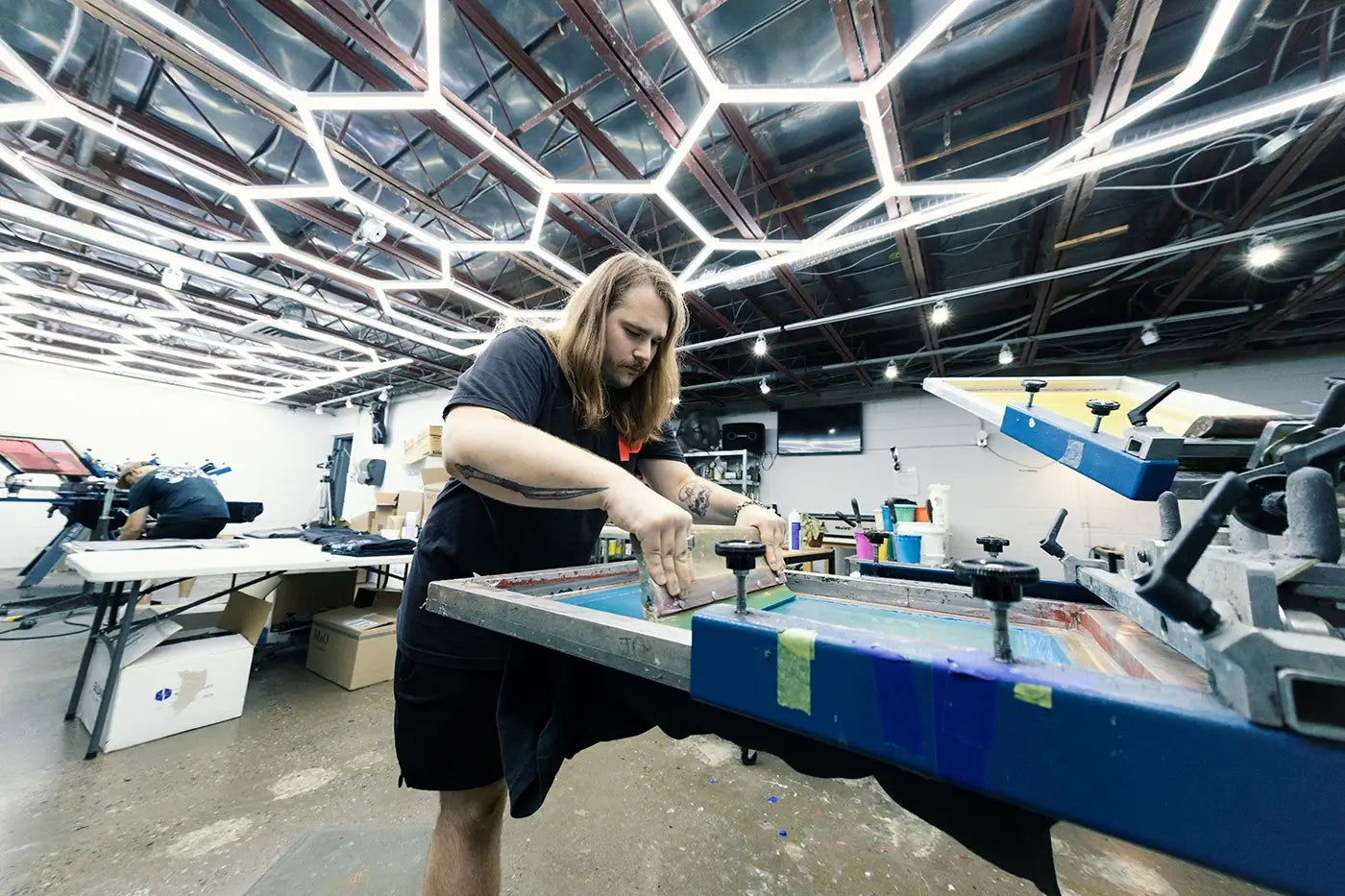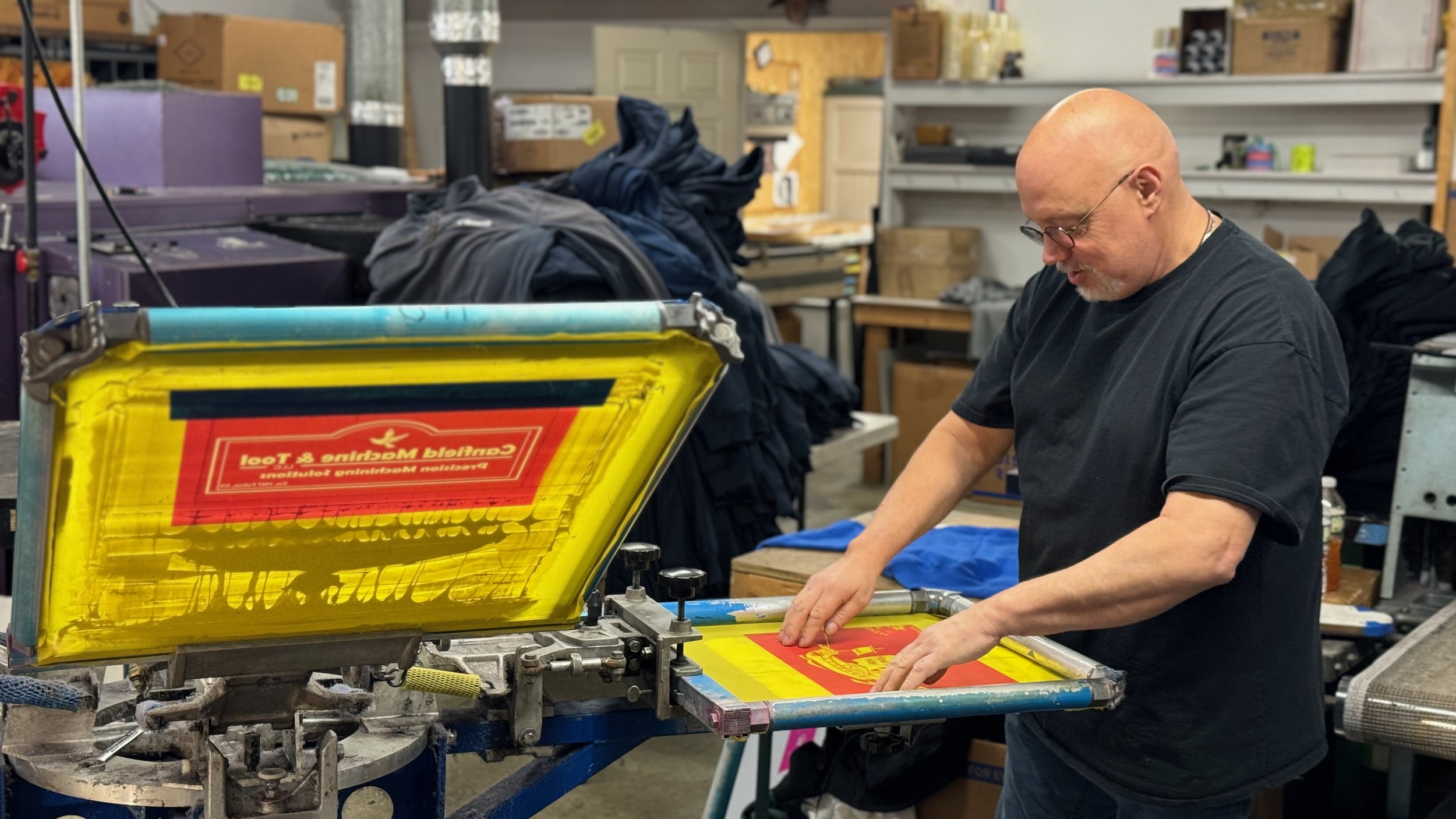Beginner-Friendly Screen Printing Kit for DIY Projects
Beginner-Friendly Screen Printing Kit for DIY Projects
Blog Article
Understanding Silk Display Printing: Advice for Creating Stunning Layouts
If you're looking to understand silk screen printing, you'll need greater than simply enthusiasm. It calls for a solid understanding of methods, the right devices, and thorough prep work. You'll uncover how to prepare your art work and tackle usual concerns that can emerge throughout the process. By the end, you'll prepare to produce sensational styles that show your distinct style. First, let's explore the essential basics that lay the foundation for your success.
Comprehending the Fundamentals of Silk Screen Printing
Silk display printing, commonly called screen printing, is a functional approach for moving layouts onto numerous products. You'll discover it's suitable for printing on fabrics, paper, plastic, and much more. The process involves producing a stencil, or display, that allows ink to travel through only in particular locations, creating clean and dynamic designs.
To start, you'll need to prepare your art work, ensuring it remains in an ideal style. screen printing kit. You'll coat your display with a light-sensitive emulsion and reveal it to light as soon as you have actually got your style ready. This step develops a stencil of your style on the display
After washing out the unexposed emulsion, you're readied to print. Align your display over your material, apply ink, and utilize a squeegee to press the ink through the display. It's all about method and persistence, so don't wait to experiment and refine your strategy as you go.
Important Tools and Products You'll Require
To begin with silk screen printing, you'll need a couple of standard products like screens, squeegees, and ink. You can discover innovative tools that improves your printing high quality and effectiveness when you're comfortable. Allow's look at what you'll call for to ensure your jobs achieve success from the beginning.
Basic Silk Screen Supplies
Beginning on a silk screen printing task requires a few vital devices and materials to ensure your success. You'll require a silk screen frame, which holds the mesh that transfers your layout. A squeegee is essential for pushing ink through the screen onto your substratum. Do not fail to remember the ink itself; select shades that match your design and the material you're printing on. A source of light is critical for subjecting your screen, in addition to emulsion to create your stencil. You'll also need a proper work area, preferably one that's well-lit and complimentary from dirt. Supply up on cleaning supplies to maintain your tools and keep your displays in great problem. With these essentials, you prepare to dive into your task!
Advanced Printing Tools
When you prepare to take your silk display printing to the next level, investing in innovative printing tools can make a substantial difference. A top notch display printing machine is crucial; appearance for a multi-color press that permits precise enrollment and quicker production. You'll likewise desire to upgrade to an extra efficient direct exposure device to assure your layouts are dynamic and sharp.
Take into consideration purchasing a trusted warm source, like a conveyor clothes dryer, for also curing of inks. Don't neglect concerning specialized inks; water-based and discharge inks give outstanding outcomes on numerous textiles. Finally, a great set of squeegees and solution scoop coater will simplify your procedure, providing your layouts that expert edge.
Preparing Your Artwork for Printing
Preparing your artwork for silk display printing is essential to achieving vivid, specialist results. Beginning by validating your style remains in the best style-- vector documents like.AI or.EPS work best. In this manner, your art work keeps top quality at any kind of size. Next, inspect the color setting; use CMYK for precise shade depiction.
Once your documents prepares, develop a separate layer for every color in your style. This'll make it less complicated throughout the printing procedure. Don't neglect to add enrollment marks to line up shades appropriately.
Likewise, think about the mesh matter of your screen; better information could require a greater mesh count. Save your art work with a resolution of at the very least 300 DPI to guarantee crisp prints. By adhering to these steps, you'll establish on your own up for a successful printing experience and bring your styles to life perfectly.
The Screen Printing Process: Step-by-Step
Since you've prepared your art work, it's time to concentrate on the display printing procedure itself. You'll begin by preparing your display, guaranteeing it awaits the ink application. From there, you'll explore different printing techniques to attain the best outcomes for your job.
Preparing Your Display
Getting your screen ready is a vital action in the silk screen printing procedure. First, clean the screen completely to eliminate any oil, deposit, or dirt. Utilize a degreaser and rinse it well to assure a smooth surface area for your emulsion. Next, use a light layer of emulsion uniformly across the screen using an inside story coater. Make certain to do this in a poorly lit location to avoid early direct exposure. Enable the emulsion to dry completely before exposing it to your design. As soon as completely dry, put your transparency on the screen and use a source of light to reveal the design. After direct exposure, rinse the unexposed solution, and you'll have your screen planned for printing.
Printing Strategies Discussed
When your display prepares, you can plunge into the amazing process of printing. Location your display on your substrate-- whether it's material, paper, or one more product. Secure it to avoid any movement. Next, pour your ink onto one side of the display and utilize a squeegee to draw the ink across the design. Apply even push to assure the ink permeates through the mesh. Raise the display carefully to expose your print. Let each layer completely dry before applying the next if you're layering colors. Clean your screen promptly to stop ink from obstructing the mesh and drying. With technique, you'll grasp the subtleties of pressure and timing, which will certainly help you accomplish crisp, vivid styles.
Tips for Getting Vibrant Color Styles
While achieving vivid shades in silk screen printing may appear challenging, you can easily elevate your designs with a few vital methods. Initially, select high-quality inks particularly made for silk display printing; they give better pigmentation and coverage. Mixing inks appropriately can likewise enhance vibrancy-- experiment with ratios to find the ideal blend that stands out.

Last but not least, don't forget treating your prints properly. Proper warmth setting guarantees the colors bond with the material, maintaining their vibrancy in time. By implementing these techniques, you'll produce stunning, attractive styles that really radiate.
Troubleshooting Common Printing Issues
Despite having dynamic shades in your layouts, silk screen printing can in some cases present challenges. One typical problem is ink blood loss, which frequently happens when you make use of way too much ink or don't allow the previous layer completely dry totally. To avoid this, use a squeegee with just the best stress and ensure each layer is completely dry prior to adding a lot more.
If your layout isn't lining up effectively, confirm your enrollment marks and make adjustments to your screens. Tidy your screens thoroughly before starting your print run.
Finally, if the ink isn't adhering well to the fabric, take into consideration the fabric type and the curing procedure. Ensure you're making use of the ideal ink and that you're treating it at the suitable temperature level. Fixing these usual concerns will certainly assist you accomplish sensational results.
Trying out With Methods and Impacts
Trying out with various techniques and impacts can raise your silk display printing jobs to brand-new elevations. You can also play with structures-- using different squeegee techniques or integrating materials like brushes or sponges adds dimension to your prints.
Take into consideration making use of specialized inks, such as glow-in-the-dark or metal, to offer your designs an unexpected spin. You may also explore stenciling, where you can cut elaborate designs for spectacular impacts.
Do not forget substrate variants! Printing on materials, wood, or paper can yield different results that boost your job's feeling.
Ultimately, keep a journal of your experiments. Documenting your successes and failings will certainly assist your future developments and help you improve your style. Accept the procedure, and appreciate the journey of discovering what works best for you!
Regularly Asked Concerns
Exactly how Do I Clean and Keep My Screen Printing Devices?
To clean and maintain your screen printing devices, routinely scrub displays with an appropriate cleaner, laundry mops after usage, and shop everything in a dry, dust-free environment. Maintaining points neat warranties better prints and longer-lasting devices.

Can I Print on Materials Aside From Material?
Consider making use of wood, plastic, or paper. Simply make sure your screens and inks are suitable with those surfaces for the best results.
What Is the very best Method to Store Displays and Inks?
To store inks and screens successfully, maintain displays upright in an awesome, dry location, and cover them to stop dirt. Store inks in impermeable containers, far from straight sunlight, to keep their quality and uniformity.
Exactly how Do I Pick the Right Mesh Count for My Job?
Choosing the best mesh matter relies on your design's detail and ink type. For great information, go higher, like 200 mesh (screen printing kit). For strong styles, a lower count, around 110, functions finest. Experiment to locate your perfect match.
What Are the Ecological Effects of Silk Screen Printing?
Silk screen printing can have environmental impacts, like chemical waste and water usage. You can lessen these by making use of environment-friendly inks, reusing materials, and appropriately disposing of chemicals to decrease your task's environmental impact.
Silk display printing, often called display printing, is a functional method for moving layouts onto various materials. Straighten your display over your product, apply ink, and make use of a squeegee to push the ink via the screen.To get started with silk screen printing, you'll need a couple of standard materials like displays, squeegees, and ink.When you're prepared to take your silk screen printing to the following level, investing in sophisticated printing devices can make a substantial distinction.Obtaining your display prepared is an essential step in the silk display printing process.
Report this page